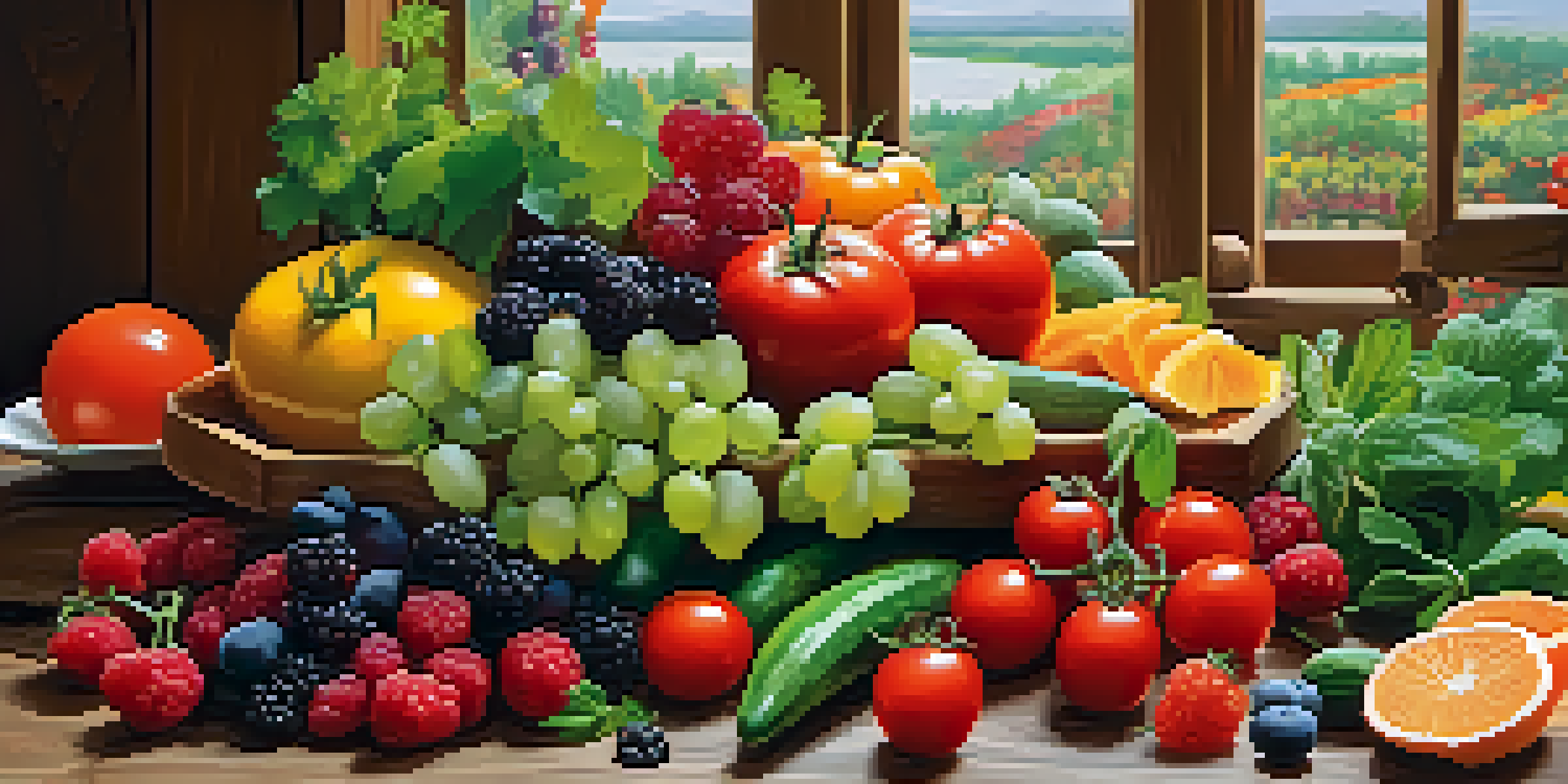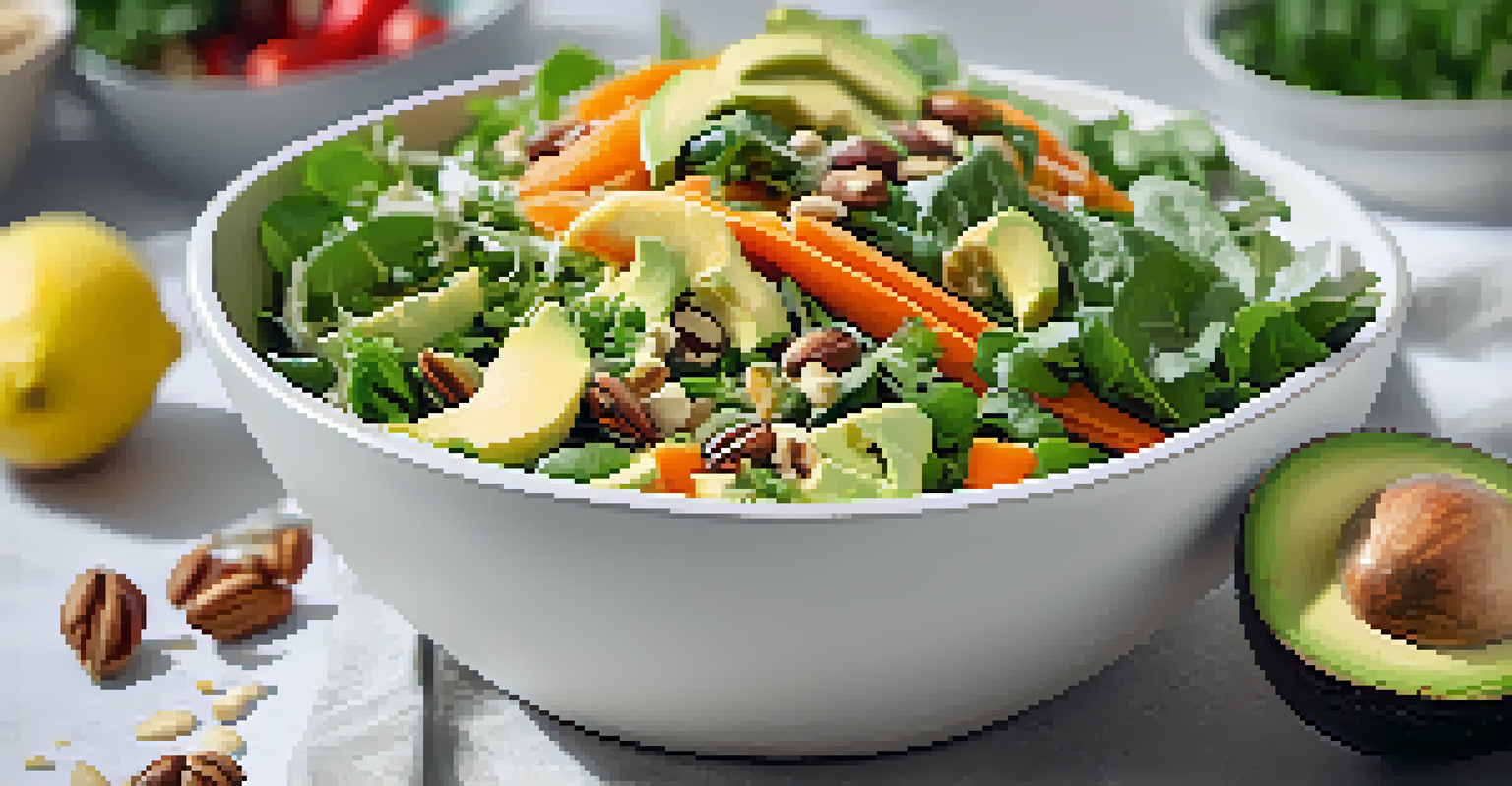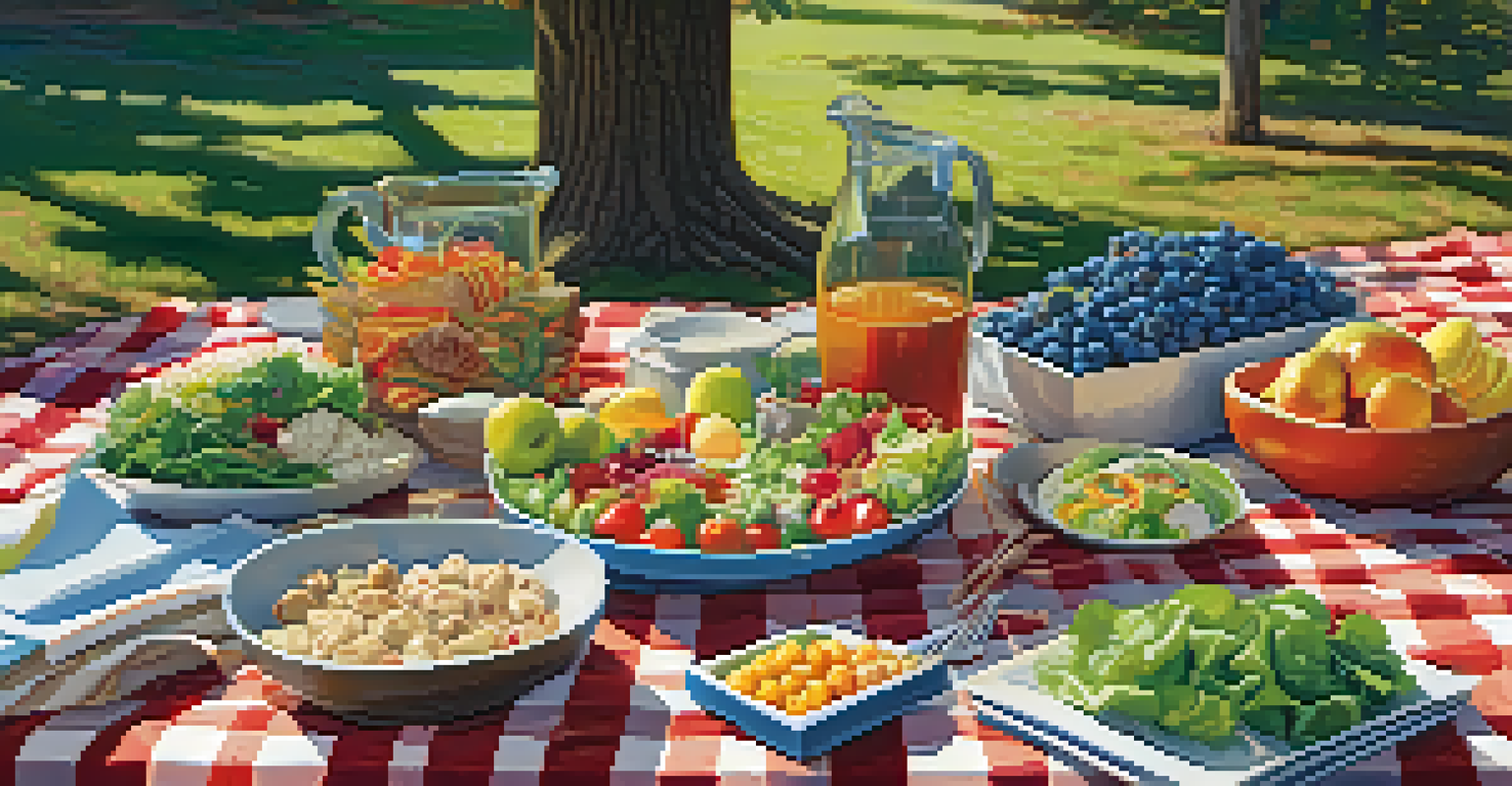Planning a Seasonal Raw Food Menu for Health and Taste

Understanding the Benefits of a Raw Food Diet
A raw food diet primarily consists of unprocessed, uncooked foods, which can be packed with vitamins and enzymes that cooking often destroys. By choosing seasonal produce, you not only enhance the nutritional value but also embrace flavors at their peak. This approach can lead to better digestion, improved energy levels, and even a boost in mood, making it a wonderfully holistic choice for health enthusiasts.
Let food be thy medicine and medicine be thy food.
Additionally, eating raw foods can encourage a more mindful approach to meals, as you'll be focusing on fresh, whole ingredients. Imagine biting into a crisp, juicy apple or savoring a vibrant salad bursting with colors and textures—these experiences can bring you closer to your food and nature. Plus, with the abundance of seasonal options, variety is easy to achieve.
Many people find that incorporating more raw foods into their diet can lead to weight management benefits, as these foods are often lower in calories and high in fiber. If you're curious about trying out a raw food lifestyle, starting with a seasonal menu can make the transition much more enjoyable and sustainable.
Choosing Seasonal Ingredients for Your Menu
When planning a raw food menu, the first step is to identify which fruits and vegetables are in season. Seasonal ingredients not only taste better but are often more affordable and sustainable. For instance, in the summer, you might enjoy fresh tomatoes, cucumbers, and berries, while winter could bring hearty root vegetables and citrus fruits into play.

You might want to consider visiting local farmer's markets or joining a community-supported agriculture (CSA) program to source your ingredients. This not only supports local farmers but also gives you a firsthand look at what's fresh and available in your area. Plus, engaging with local growers can provide insights into the best ways to prepare and enjoy their produce.
Embrace Seasonal Ingredients
Choosing seasonal fruits and vegetables enhances flavor, affordability, and sustainability in your raw food diet.
It’s also important to remember that eating seasonally can help you connect with the rhythms of nature. As you notice the changing produce throughout the year, it can inspire creativity in your cooking, pushing you to try new combinations and flavors that you might not have considered otherwise.
Creating a Balanced Raw Food Menu
A well-rounded raw food menu should include a variety of food groups to ensure you're getting all the necessary nutrients. Incorporating fruits, vegetables, nuts, seeds, and even fermented foods can provide a balance of carbohydrates, proteins, and healthy fats. For example, a mixed salad with leafy greens, avocado, nuts, and a zesty dressing can be both satisfying and nutritious.
The food you eat can be either the safest and most powerful form of medicine or the slowest form of poison.
Don't forget about incorporating different textures and flavors into your dishes. Think creamy avocado, crunchy vegetables, and sweet fruits coming together in one bowl. This not only makes your meals more enjoyable but also keeps you satisfied for longer, reducing the temptation to snack on less healthy options.
Finally, consider portioning your meals into smaller servings throughout the day. This grazing approach can help maintain energy levels and prevent overeating. Pairing different flavors and textures can make each bite exciting, ensuring that your raw food experience is as delightful as it is nourishing.
Incorporating Flavorful Dressings and Sauces
One of the keys to an enjoyable raw food experience is in the dressings and sauces you choose. These can transform a simple salad or vegetable platter into a culinary masterpiece. Think about creating dressings with fresh herbs, citrus juices, and healthy fats like olive oil or tahini to elevate your dishes.
Experimenting with flavors can lead to delightful discoveries. For instance, a zesty lemon-tahini dressing can complement a medley of vegetables beautifully, while a spicy ginger-lime sauce can give your dishes an exciting kick. Don't be afraid to play with different combinations until you find what works for you.
Create Balanced Menus
Incorporating a variety of food groups ensures you receive essential nutrients while enjoying different textures and flavors.
Remember, the goal is to enhance the natural flavors of your ingredients rather than mask them. A well-crafted dressing can bring out the best in your seasonal produce while keeping your meals fresh and vibrant.
Incorporating Superfoods into Your Raw Menu
Superfoods like chia seeds, spirulina, and goji berries can boost the nutritional content of your raw food menu. These tiny powerhouses are often packed with antioxidants, vitamins, and minerals that can enhance your overall well-being. For example, adding chia seeds to a smoothie or a pudding can provide a significant dose of omega-3 fatty acids and fiber.
Including superfoods is also a great way to experiment with flavors and textures. Imagine the crunch of hemp seeds on a salad or the natural sweetness of goji berries in your favorite raw dessert. These ingredients can not only enhance the taste but also provide a nutritional punch that supports your health goals.
However, it's important to remember that the best approach is to incorporate superfoods in moderation. While they can be beneficial, they shouldn't overshadow the diverse array of seasonal fruits and vegetables that should form the core of your raw food diet.
Planning for Seasonal Raw Food Events and Gatherings
Planning a seasonal raw food menu for gatherings can be a fun way to share your love for healthy eating with friends and family. Consider hosting a potluck where each guest brings a raw dish, allowing everyone to explore various flavors and ideas. This not only promotes community but also takes the pressure off you as the sole planner.
When preparing for larger events, think about creating a beautiful raw food display that showcases the vibrant colors and textures of your dishes. A visually appealing setup can draw guests in and spark conversations about the benefits of raw foods. You might want to include a variety of dips, salads, and desserts, ensuring that there’s something for everyone.
Stay Inspired on Your Journey
Engaging with community resources and maintaining a seasonal calendar can help keep your raw food adventure exciting and fresh.
Lastly, don’t shy away from getting creative with your presentation. Use seasonal fruits and vegetables to add a decorative touch to your spread, and consider providing recipe cards so guests can replicate their favorites at home. This can inspire others to embrace raw foods in their own lives.
Staying Inspired and Continuing Your Raw Food Journey
Maintaining a raw food diet can be a journey filled with exploration and creativity. To keep your enthusiasm alive, consider following raw food bloggers, attending workshops, or joining local groups focused on raw cuisine. These resources can provide new ideas, recipes, and support as you navigate your raw food adventure.
You might also want to keep a seasonal calendar of your favorite fruits and vegetables, marking when they're at their peak. This can help you stay organized and inspired as you create your menus throughout the year. By anticipating the changing seasons, you can continually look forward to new flavors and combinations.

Lastly, remember to be flexible and patient with yourself. Experimentation is key, and not every dish will be a hit. Embrace the learning process and enjoy the delicious journey of planning and enjoying a seasonal raw food menu!